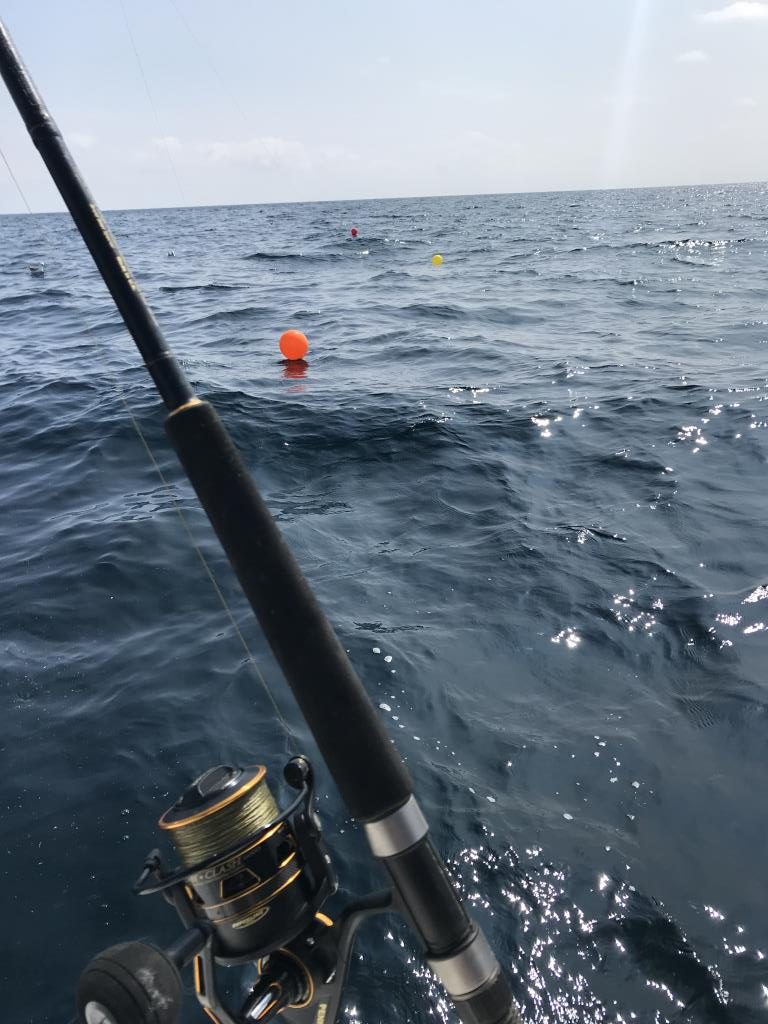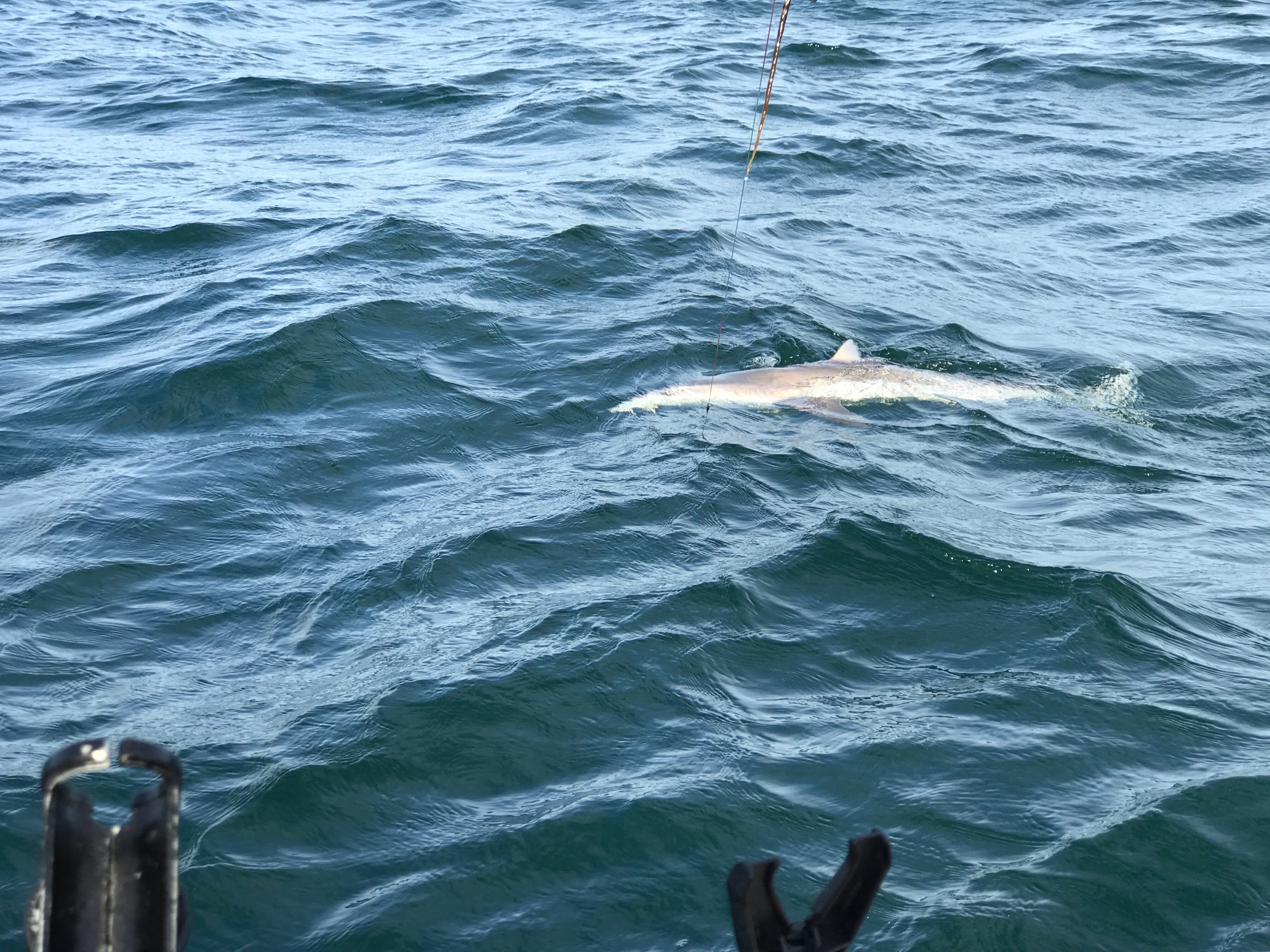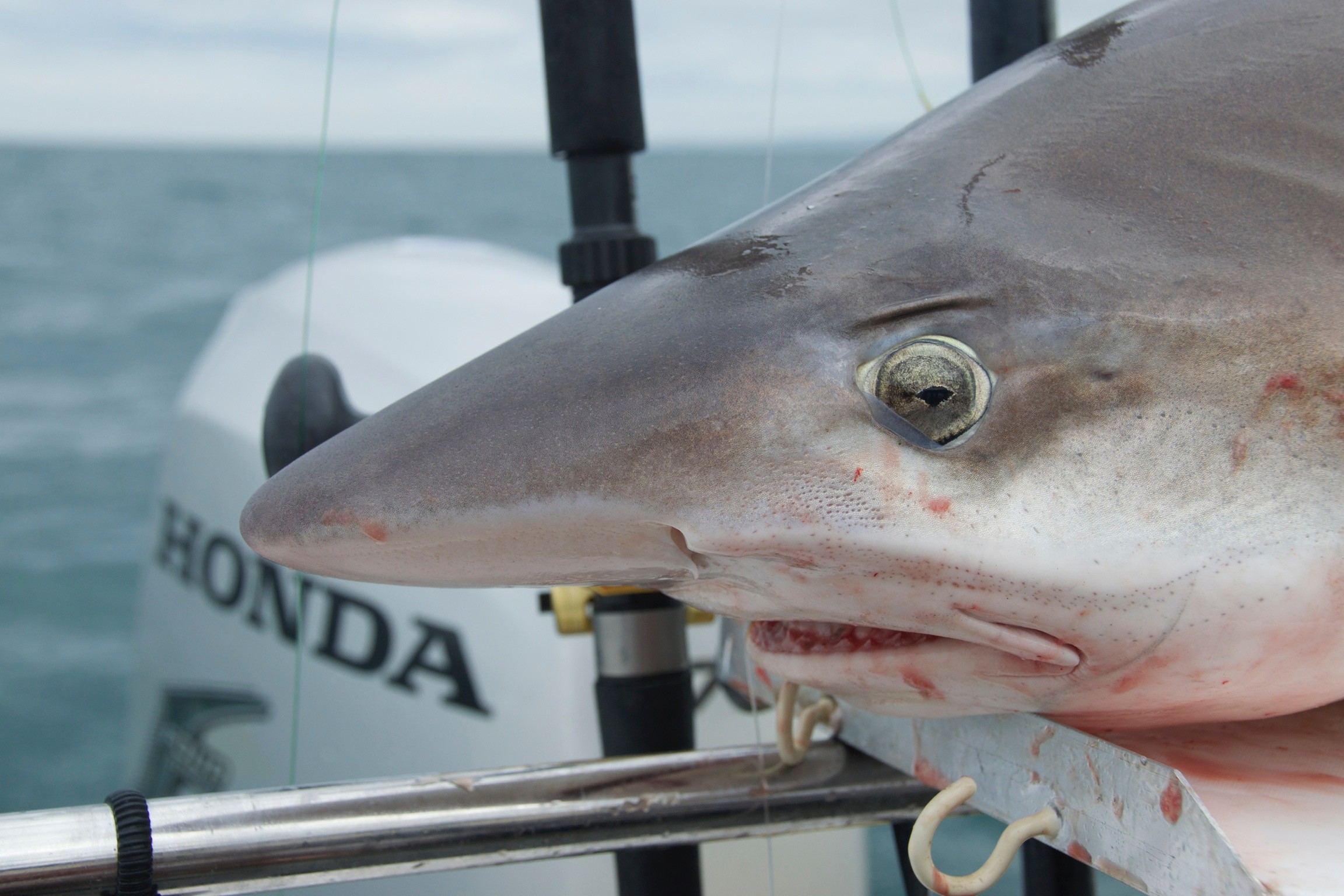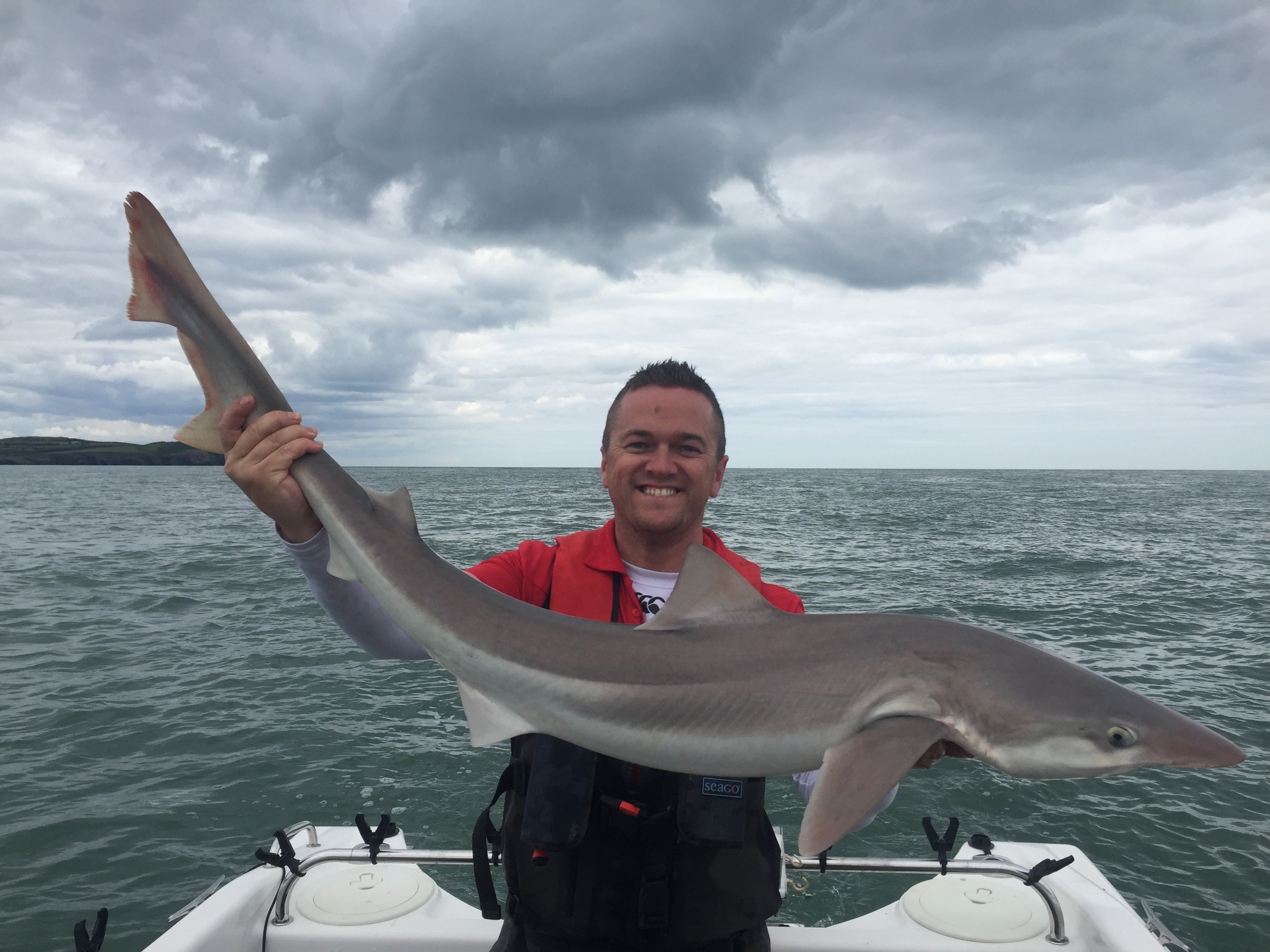Is it shark fishings dirty little secret or a rare incident while chasing down big predatory sharks? Avoid the eversion and fish with balanced tackle....


What we all want to see – Healthy Sharks
I think the majority of discerning anglers are always concerned about getting the balance right when it comes to fighting a fish. The days of the barge pole for boat angling is well and truly gone for most. Fighting a fish on well balanced tackle enhances the angling experience. However getting the balance wrong can be damaging to the fish and ultimately damaging for the equipment. Using too heavy tackle is no fun but using too light tackle puts undue stress on the quarry. There is no species where the choice of tackle can be as important as when choosing for shark fishing.

When we speak of sharks let’s concentrate on the species that attain weight over 40lbs. Fish under that weight can safely be targeted on most rods other than ultra-light packages. In the small boat realm we are talking about the common species –: Blue Shark, Porbeagle and of course Tope.
Experience and knowledge about your fishing location is critical to making the right decision. You need to cater for the average fish but you need to be able to handle the larger specimens without too much messing.
Why is the concern for sharks? Stomach Eversion or Gastric Eversion that’s why!
Sharks have a rather interesting mechanism called stomach eversion. It is usually a mechanism by which sharks can clear indigestibles from their stomachs –- they simply eject their stomach from their mouths emptying the contents and they quickly swallow their stomach again. It is an incredible process. I am not sure whether all sharks can eject their stomachs but studies seem to hint that all sharks and rays can. However scientists reckon that a shark that is under stress when hooked can also trigger the eversion mechanism. In most cases the stomach remains outside the sharks mouth. This should be a concern for all anglers.

A strong Blue – ready for return
As a younger less experienced angler, I witnessed stomach eversion in a blue shark. I first thought it was a bladder until I researched and learned sharks have none. I learned that I had witnessed my first shark stomach eversion It was most disconcerting to see this large sagging flesh being damaged by the sharks teeth. Not a pretty sight at all. We carefully picked up the shark and packed the stomach back into its mouth and holding the shark by the pectoral fins, we shook the fish gently and the stomach disappeared down the sharks gullet. We put the shark back in the water and it swam off –- Did it survive? We will never know.
As the years went by I watched for some pointers as to why the stomach eversion was happening. I considered that deep hooking was a factor. However I saw deep hooked fish and no eversion. I saw lip hooked fish and eversion. I have settled on what I would consider the prime reason for stomach eversion in blue sharks –- Over playing the fish.

Picture 1 – A big blue shark just under the boat. The fish took one small final run…. (Video Still)

Picture 2 – About four minutes after the last picture with the shark nearing the boat – EVERSION! (Video Still)

Picture3 – You can clearly see the sharks stomach here. This shark swam off strongly. (Video Still)
I have not seen a shark chuck its stomach on my boat in years. Anybody fishing with me will tell you that I do tend to try and “motivate” whoever is fishing with me to strike the fish hard and soon and to make sure that the fish has to work for every inch of line. To that end I keep my drag as tight as I dare. The fish I am fighting tend to come to the boat tired and quiet but they come to the boat relatively quickly. They do not tend to chuck their stomachs.
On the other hand I have seen lots of pictures of sharks with their stomachs hanging out. Obviously I don’t know what the situation was on board but I am coming to the conclusion that more than likely the fish was played too long. The angler either set their drag too loose and let the fish swim too long or the tackle used was too light and therefore the angler was unable to deal with the fish effectively.

Big sharks are more difficult to deal with
What is too light tackle for blue shark fishing? You must set up for the average fish in your area and then you must allow for the bigger fish that happen along. Take the south coast of Ireland, I would suggest that the average shark is somewhere around 60lbs. An 80lb fish is a decent fish and a likely target. Fish of 100lb+ are not as common but are a realistic possibility. A decent 12/20lb rod with a good amount of backbone will tackle most. A decent 20/30 rod that is not too much of a poker will do very well and will give the angler a thrill and will give due respect to the fish. There is no place for targeting shark with lighter spinning gear and light reels unless you are sight fishing and can see the fish you are targeting.

Bending into a big Blue Shark – No quarter given. No eversion.

A blue, lip-hooked on barbless J – Ready for release

East Coast Tope
The same holds true for tope. Many East Coast anglers will tackle up according to the time of year and the strength of tide. No point being under gunned when facing a 60lb tope in a strong run of tide. Experienced tope anglers have echoed my thoughts as to how and why tope chuck their stomach in certain situations. The tide is a big factor in some tope fishing situations. You catch a 50+tope in a very strong run of tide and you may find yourself having to buoy off your anchor and giving chase to that fish of a lifetime. One angler remarked how charter boat fishing in strong runs of tide can yield more eversions as anglers take longer in landing fish and the option of slipping anchor is not really practical. The trick here, as with all shark fishing is to balance your tackle to the location and the best local knowledge. Anglers fishing in late autumn off Co. Wicklow will use heavy gear as the chances of catching a +50lb tope is very high. Big fish, big tides and big weights necessitate a stronger approach. A +50lb tope in a strong run of tide will be a very heavy fish indeed.

Bruiser! (Rob McClean)
In simplest terms, setting out to catch sharks on too light tackle is no boast. Fish welfare can be compromised. Of course do not underestimate the strength in rods that look short and slim. Some anglers are using rods that were designed for casting and popping big lures and these rods belie the reserves of strength need to catch fish from the tropics. Of course you can also just be unlucky on the day and you may have to deal with an eversion anyway. Certainly if a shark is weak or sick it may struggle with the stresses and strains of a capture.
So what can you do if confronted with a stomach eversion? The truth is we don’t know what best practice is. Should we t-bar the fish off at the side of the boat and hope for the best? The shark will swim away. But the question is does it survive? Does it ingest its stomach again and carry on as normal? Should we take the fish on board and try to put the stomach back in place? How can we be sure of doing the right thing? Will we damage the organ in the process of trying to help? I saw a video of an angler poking a sharks stomach back in with a lump of timber. I would suggest that the chances of damaging the fish are high so such practices should be avoided. Until we can have further tests and studies I would think anglers need to play their part and “play it right”

Your worst nightmare…
A tope eversion
(Cropped from Facebook)
Smart thinking is that the first thing we anglers should consider is to attempt prevention of gastric eversion, when a shark takes a bait you should strike quickly. Have confidence in your traces and tackle and tighten down the drag as much as you can allowing the fish to take line but have to work hard in doing so. Make sure that the fish is fighting for every inch of line it takes and not just swimming around the place. If you think that you are going to break your rod then you are more than likely outgunned; or maybe you are just chicken!
Bend the rod as much as you can. If you are bending the rod and still making no progress then you are definitely outgunned. There is no substitute for pure graft when attempting to land a big fish. You need to use all the tools in your armoury. Chase the fish down with the boat if that may help. It is probably better for the fish to be lost it at this stage. The angler will surely tackle up stronger for the next battle. Shark fighting is one of these times where you must let the rod do the work. Pump and grind that fish back to the boat. You’ll get somewhat of a breather as the fish runs.
Make sure that you never allow slack in the line. I never allow the rod to straighten completely as I fight. I pump and wind making steady progress. It is an exhilarating fight. When the shark arrives at the side of the boat make the decision: Are you taking this fish on board or not. If you are not, t-bar the fish (Barbless hooks make this an easier job.) and let it on its way. If the fish is deeply hooked I would suggest cutting the wire as close to the hook as you can. If you are going to take the fish on board make sure that the deck is clear of all obstructions. Lift the fish in a quickly as possible. If the shark is thrashing about, and they do, then cover its head with a damp cloth, it seems to quieten most. Get your picture quickly and get the shark back swimming as soon as you can.

A healthy well fought East Coats tope.
You can never be sure of eliminating gastric eversion in sharks. All you can do is do right by the fish and fight well with balanced tackle. You do that, and you can spend time enjoying the experience and having a blast catching some decent sharks!
There’s no eversion here: Just some fine shark fishing!


